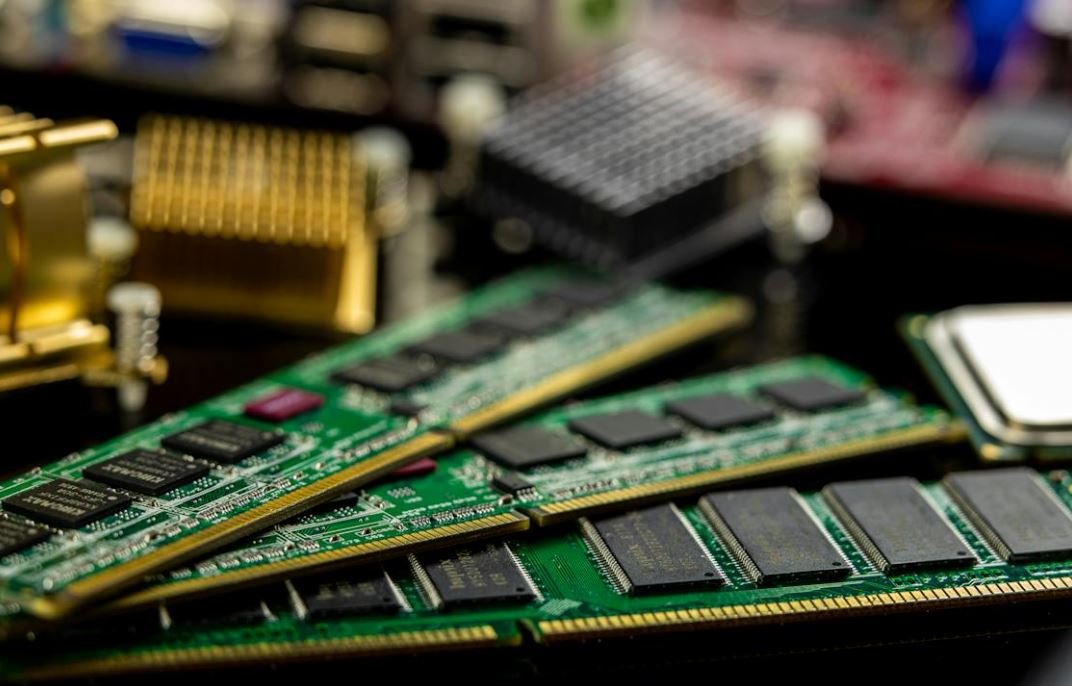AI Eco Bubble
The rise of artificial intelligence (AI) has led to a surge of interest and investment in the field, creating what can be described as an AI eco bubble. This bubble is characterized by a frenzy of activity and a rapid influx of funding into the AI sector. While it presents exciting opportunities for technological advancements and potential economic growth, it also raises concerns about sustainability and the potential for a bubble burst.
Key Takeaways
- Rapid investment and interest in AI have created an AI eco bubble.
- There are opportunities for technological advancements and economic growth.
- Sustainability and the risk of a bubble burst are concerns within the AI eco bubble.
In recent years, AI has gained significant traction across various industries, with companies exploring its potential applications and investors pouring in billions of dollars. This AI boom has created an ecosystem where startups, research institutions, and tech giants are competing to develop cutting-edge AI technologies and secure funding. *The AI eco bubble resembles the dot-com bubble of the late 1990s, with a similar optimism about the potential of a transformative technology.
Understanding the AI Eco Bubble
The AI eco bubble is driven by a multitude of factors. First and foremost is the increasing availability of big data and advancements in machine learning algorithms, enabling AI systems to analyze and make predictions from massive amounts of information. *This data-driven approach is revolutionizing industries such as healthcare, finance, and transportation, among others.
Furthermore, the rapid growth of AI has been fueled by the belief that it can solve complex problems and automate tasks more efficiently than humans. From self-driving cars to virtual assistants, AI is being applied to a wide range of domains, promising increased productivity and convenience. *However, concerns about job displacement and the ethical implications of AI remain hot topics of debate.
The Risks and Rewards
While the AI eco bubble offers immense potential, it also carries risks. One of the main concerns is the sustainability of the current AI boom. As with any bubble, there is a risk of overvaluation and unrealistic expectations, leading to a potential bubble burst. *Not all AI projects will yield the desired results, and a failure to meet expectations could trigger a market correction.
Moreover, the rapid pace of AI development may outstrip regulatory frameworks, raising concerns about data privacy, algorithmic bias, and the overall societal impact of AI technologies. *It is crucial to strike a balance between innovation and responsible deployment.
Table 1: Funding in the AI Sector (2018-2021)
| Year | Total Funding (in billions) |
|---|---|
| 2018 | 25 |
| 2019 | 37 |
| 2020 | 49 |
| 2021 (as of Q3) | 31 |
The Road Ahead
The AI eco bubble is reminiscent of previous technology-driven bubbles, but *there is no predetermined knowledge cutoff date to predict its future trajectory. It is vital for stakeholders to exercise caution and ensure responsible experimentation and deployment. Balancing optimism with realistic expectations will be key to creating a sustainable AI ecosystem that delivers on its promises while minimizing the risks associated with a potential bubble burst.
Table 2: Industries Adopting AI Technologies
| Industry | Main AI Applications |
|---|---|
| Healthcare | Medical imaging analysis, drug discovery, virtual nursing assistants |
| Finance | Fraud detection, algorithmic trading, customer service chatbots |
| Transportation | Autonomous vehicles, route optimization, predictive maintenance |
Challenges and Opportunities
As the AI eco bubble continues to expand, it is essential to address the challenges and seize the opportunities it presents. *Interdisciplinary collaboration and a proactive dialogue among researchers, policymakers, and industry experts can help navigate the ethical, legal, and social implications of AI technologies.
- Ensuring transparency and accountability in AI algorithms and decision-making processes.
- Addressing the potential biases embedded in AI systems and promoting fairness.
- Re-skilling and upskilling the workforce to adapt to the changing nature of work.
Table 3: Impact of AI on Jobs
| Impact Category | % of Jobs Impacted |
|---|---|
| Automation | 47% |
| Augmentation | 52% |
| Creation | 21% |
In conclusion, the AI eco bubble represents a dynamic and evolving landscape of innovation, potential, and risks. However, by ensuring responsible development, cooperation among stakeholders, and a thoughtful approach to addressing the challenges it poses, we can harness the transformative power of AI while minimizing the risks associated with a potential bubble burst.

Common Misconceptions
Misconception #1: AI is a threat to humanity
One common misconception is that artificial intelligence (AI) is a threat to humanity, often portrayed in popular media as robots taking over the world. However, this perception is mostly sensationalized and far from reality. It is important to understand that AI is designed and programmed by humans, and its capabilities are limited to the tasks it is programmed for.
- AI systems have no consciousness and therefore lack the desire or intention to harm humans.
- AI is a tool that can assist humans in various sectors, such as healthcare, finance, and transportation.
- Ethical considerations and guidelines are in place to ensure proper use of AI technology.
Misconception #2: AI will eliminate jobs
Another misconception surrounding AI is the belief that it will result in widespread unemployment due to automation replacing human workers. While it is true that AI can automate certain tasks, its purpose is to augment human capabilities rather than replace them entirely.
- AI can help eliminate mundane and repetitive tasks, allowing humans to focus on more creative and complex work.
- New jobs will be created to support the development, implementation, and maintenance of AI systems.
- AI can enhance productivity and help businesses grow, leading to the creation of more job opportunities.
Misconception #3: AI is infallible and unbiased
Many people assume that AI systems are infallible and completely unbiased. However, AI models and algorithms are developed by humans and can inherit their biases and limitations.
- AI systems can reflect and amplify the biases present in the data they are trained on.
- Ongoing research and development are focused on improving AI algorithms to address bias and ensure fair outcomes.
- Human oversight and intervention are crucial to verify and correct the decisions made by AI systems.
Misconception #4: AI operates like a human brain
It is often misunderstood that AI functions similarly to the way the human brain does. While AI can perform complex tasks, its underlying mechanisms are fundamentally different from the biological processes of the human brain.
- AI relies on data and algorithms to process information and make decisions.
- The human brain possesses emotions, consciousness, and intuition, aspects that AI lacks.
- AI systems are based on logical reasoning, whereas human thinking encompasses intuition and creativity.
Misconception #5: AI is only for tech-savvy individuals
Some people believe that AI is solely for those with advanced technical skills and knowledge. However, AI technology is becoming more accessible and user-friendly, and its applications are expanding across various sectors.
- AI-powered applications and products are being designed with user-friendliness in mind, allowing individuals with minimal technical expertise to benefit from the technology.
- AI has the potential to augment the abilities of professionals in various fields, including healthcare, finance, and education.
- Learning resources and training programs are available to help individuals acquire the skills needed to work with AI technology.

The Rise of AI Adoption
As artificial intelligence (AI) continues to shape various industries, it is experiencing a rapid growth in adoption and investment. From autonomous vehicles to personalized customer experiences, AI has become a crucial component for businesses striving to stay ahead of the competition. The following tables highlight fascinating data and insights regarding the current AI ecosystem and its potential future impact.
AI Spending by Industry
Increasingly, organizations across industries are recognizing the potential of AI and investing accordingly. The table below outlines the top ten industries that have allocated the most funds to AI research and development.
| Industry | AI Spending (in billions) |
|---|---|
| Finance | 10.2 |
| Healthcare | 8.9 |
| Retail | 6.4 |
| Manufacturing | 4.7 |
| Transportation | 3.8 |
| Telecommunications | 3.2 |
| Energy | 2.9 |
| Technology | 2.7 |
| Education | 2.3 |
| Transport | 1.8 |
AI Job Growth by Country
As the demand for AI expertise increases, various countries strive to cultivate a skilled workforce and maintain their position on the cutting edge of AI technology. The table below displays the top five countries contributing to AI job growth.
| Country | AI Job Growth (in thousands) |
|---|---|
| United States | 135 |
| China | 98 |
| India | 67 |
| United Kingdom | 45 |
| Germany | 32 |
AI Startups Attracting Funding
Investors are eager to support innovative AI startups with promising applications. The table below reveals the top five AI startups that have recently secured significant funding.
| Startup | Funding (in millions) |
|---|---|
| OpenAI | 500 |
| UiPath | 400 |
| SenseTime | 410 |
| Lyft | 350 |
| Megvii | 300 |
AI Patent Filings by Company
Companies strive to protect their AI innovations through patent filings. The table below showcases the top five companies leading in AI patent applications.
| Company | AI Patent Filings |
|---|---|
| IBM | 9,100 |
| Microsoft | 8,200 |
| 7,800 | |
| Samsung | 6,500 |
| Sony | 5,900 |
Global AI Research Citations
Researchers contribute to AI progress through their publications, leading to valuable insights. The table below exhibits the top five countries cited in AI research publications.
| Country | Research Citations |
|---|---|
| United States | 32,500 |
| China | 27,900 |
| United Kingdom | 20,200 |
| Germany | 15,800 |
| Canada | 10,700 |
AI in Education
AI integration in education has the potential to revolutionize learning and teaching techniques. The table below highlights the benefits of AI in education.
| Benefit | Description |
|---|---|
| Personalized Learning | AI-powered systems offer tailored learning materials based on individual student needs, promoting personalized education. |
| Data-Driven Insights | Analyzing vast amounts of data, AI provides valuable insights on student performance, helping educators identify areas for improvement. |
| Virtual Assistants | AI-driven virtual assistants enhance the learning experience by answering student queries and providing support outside classroom hours. |
AI in Healthcare
AI is making significant contributions to the healthcare industry, improving diagnostics, treatment, and patient care. The table below demonstrates the impact of AI in healthcare.
| Application | Advantages |
|---|---|
| Medical Imaging Analysis | AI algorithms analyze medical images with precision, assisting radiologists in identifying abnormalities and diseases more accurately. |
| Personalized Medicine | By utilizing patient data and AI algorithms, personalized treatment plans can be created, optimizing outcomes and reducing adverse effects. |
| Virtual Health Assistants | AI-powered assistants provide support to medical professionals, helping with administrative tasks, triage, and patient monitoring. |
AI Ethics Concerns
As AI advances, ethical considerations become crucial to ensure responsible development and deployment. The table below outlines some common AI ethics concerns.
| Concern | Description |
|---|---|
| Algorithm Bias | Machine learning algorithms can unintentionally reflect bias present in the data they are trained on, leading to biased outcomes or decisions. |
| Data Privacy and Security | AI systems require access to vast amounts of user data, raising concerns about privacy breaches and appropriate data protection measures. |
| Job Displacement | The automation potential of AI presents concerns regarding job losses and the need for reskilling or upskilling the workforce. |
The Future of AI
Artificial intelligence continues to rapidly evolve, with new possibilities and challenges on the horizon. Embracing AI’s potential while addressing ethical considerations will be crucial for its successful integration into various industries.
Frequently Asked Questions
What is AI Eco Bubble?
AI Eco Bubble refers to the concept of creating a sustainable environment for artificial intelligence systems to thrive and make a positive impact on society.
Why is AI Eco Bubble important?
AI Eco Bubble is important because it ensures that AI systems are developed and deployed in a responsible manner, taking into consideration not only their performance but also their ethical and environmental implications.
How does AI Eco Bubble contribute to sustainability?
AI Eco Bubble contributes to sustainability by encouraging the use of renewable energy, reducing carbon emissions, promoting ethical AI practices, and minimizing waste in the development and deployment of AI systems.
What are the key components of AI Eco Bubble?
The key components of AI Eco Bubble include energy-efficient hardware, sustainable data centers, algorithms that minimize energy consumption, responsible data collection and processing practices, and transparent governance frameworks.
How can individuals support AI Eco Bubble?
Individuals can support AI Eco Bubble by promoting responsible AI usage, being mindful of their data privacy, encouraging organizations to adopt sustainable AI practices, and staying informed about the latest developments in AI ethics and sustainability.
What challenges do AI Eco Bubble faces?
AI Eco Bubble faces challenges such as the high energy consumption of AI systems, the environmental impact of data centers, potential biases in algorithms, and the need for robust regulations to ensure ethical AI deployment.
Are there any regulations or standards related to AI Eco Bubble?
There are ongoing efforts to establish regulations and standards related to AI Eco Bubble. Organizations like the IEEE and the Partnership on AI are working towards developing guidelines and frameworks for ethical and sustainable AI.
How can companies adopt AI Eco Bubble practices?
Companies can adopt AI Eco Bubble practices by implementing energy-efficient hardware, optimizing algorithms for reduced energy consumption, utilizing renewable energy sources, practicing responsible data management, and integrating ethical principles into their AI development and deployment processes.
What are the potential benefits of AI Eco Bubble?
The potential benefits of AI Eco Bubble include reduced carbon footprint, improved energy efficiency, increased trust in AI systems, enhanced data privacy and security, and the promotion of ethical AI practices for the betterment of society.
What is the future of AI Eco Bubble?
The future of AI Eco Bubble is promising, with ongoing research and innovation focusing on developing sustainable AI technologies, establishing global standards, and fostering collaborations between academia, industry, and policymakers to ensure the responsible and ethical deployment of AI systems.





